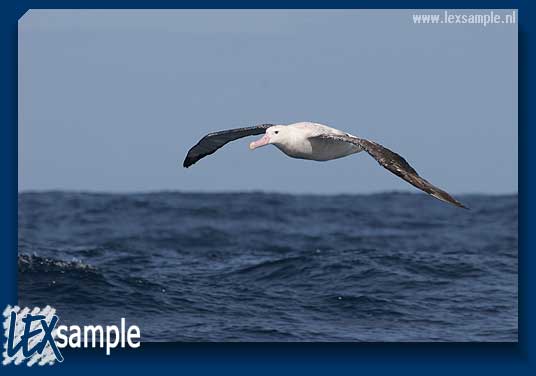
Visit the new RSPB/BirdLife Save the Albatross web site at www.savethealbatross.net
 Longline fishing is a major threat for many seabird species of the southern hemisphere.
Every year, more than 100,000 albatrosses and an additional 200,000 other seabirds drown
as a result of longline fishing. BirdLife International has calculated
that on average one albatross is drowning every five minutes.
Longline fishing is a major threat for many seabird species of the southern hemisphere.
Every year, more than 100,000 albatrosses and an additional 200,000 other seabirds drown
as a result of longline fishing. BirdLife International has calculated
that on average one albatross is drowning every five minutes.
19 of the 22 albatross species are now globally threathened with extinction.
| On this page: |
Albatrosses and storm petrels are scavengers, that try to catch some of the bait. Some albatrosses and storm petrels even learnt to follow these fishing boats, and by doing so are even more at risk of being killed on a hook.
Why are albatrosses vulnerable?
Albatrosses and storm petrels belong to the same family of tubenoses (Procellariformes). They are ocean birds that have a lot in common, including biology and behaviour, so both are victim of longline fishing. Under natural circumstances these birds may grow very old, the bigger species can live up to sixty years or more.
|
Low reproduction rate
Albatrosses and storm petrels lay only one single egg per year. Five albatross species are such long breeders, that they only breed once every two years. In all species, both parents are needed to raise their chick. In case one parent dies, the other parent will have to leave the nest at some stage to go out foraging. This means that the chick will be lost too. The partner who survives will have to skip the next breeding season, for it takes most of these birds a couple of seasons to find a suitable new partner. | |
|
Differences in distribution
Research on birds tagged with a satellite device has shown that albatross males and females do not always feed in the same waters. Within a population this may skew the male-female ratio, because one of the sexes is feeding in a region where longlining is more frequent, thus more victims, than in the region where the other sexe is foraging. Distribution patters also vary according to the phase within the breeding cyclus. Another difference exists between breeders and non-breeders. Many young non-breeding birds forage far away from the colony they were born and may enter waters were longlining is practiced. Combined, these factors result in a colony that produces less offspring. | |
|
Different feeding habits
Although nearly all species of seabirds have been victim of longlining, they are not all equally vulnerable. Some bird species tend to follow ships, others stay away from them. There are also species of both albatrosses and storm petrels that can dive quite deep and that are able to follow baited hooks when they are sinking into the water. As a result, these birds end up being caught on hooks more often than birds that cannot dive. |
Participation of France and Great Britain is crucial since these two countries own important seabird islands on the southern hemisphere. As an example, no less than 71% of the world's population of Black-browed Albatrosses breed on the Falkland Islands. Early 2006, the archipel of Tristan da Cunha (UK) also signed up to the treaty. These islands are not only home of millions of petrels, but also the rare Spectacled Petrel (Procellaria conspicillata) with a total population probably not exceeding 9,000 breeding pairs on the nearly island of Inaccessible, and the Tristan Albatross (Diomedea dabbenena), estimated at 1500-2400 pairs.
Pirate Fishing
It is easier to reach agreements with official bodies than with unregulated fisheries. In the last ten years this type of fishing has reached alarming dimensions, creating additional problems.
Current loopholes in international law allow a fleet of more than 1,000 large-scale fishing vessels to register
under flags of convenience (FOC). The boats are owned in one country but registered in another (often Taiwan, Spain, Panama, Singapore, South Corea, Japan, China and Equatorial Ginea), thus avoiding fisheries regulations.
These Illegal, Unregulated and Unreported (IUU) or "Pirate" fishing vessels operate with total disregard
for the number of seabirds they kill. Illegal catch may be up to 30% for some fish species.
At least half of the Patagonian Toothfish sold on the market originates from illegal fishing, of which the albatrosses are victims
How can you help?
On the following websites you can find more information on seabird conservation:
